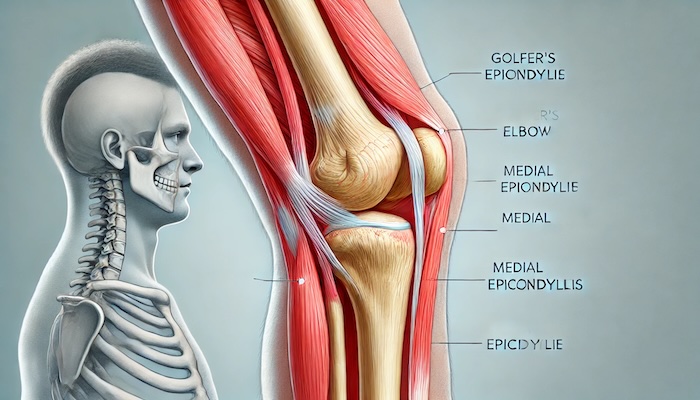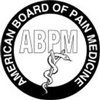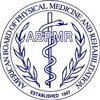
Golfer's elbow, medically known as medial epicondylitis, is a condition characterized by pain and inflammation on the inner side of the elbow. This ailment results from overuse or repetitive stress, leading to microtears in the tendons that attach to the medial epicondyle—the bony prominence on the inside of the elbow. While commonly associated with golfers, this condition can affect anyone engaging in activities that involve repetitive wrist and forearm motions.
Understanding Golfer's Elbow
The primary cause of the golfer's elbow is the overuse of the muscles and tendons that control wrist and finger movements. Repetitive activities, such as swinging a golf club, throwing a baseball, or using a computer mouse extensively, can strain these tendons, leading to inflammation and pain. Symptoms typically include:
- Pain and tenderness on the inner side of the elbow
- Stiffness in the elbow
- Weakness in the hands and wrists
- Numbness or tingling radiating into the fingers
Interventional Pain Management Approaches
Interventional pain management offers a range of minimally invasive procedures aimed at alleviating pain and promoting healing in conditions like golfer's elbow. These techniques are particularly beneficial when conservative treatments, such as rest, ice, and physical therapy, have not provided sufficient relief.
- Corticosteroid Injections: Administering corticosteroids directly into the affected area can reduce inflammation and provide temporary pain relief. However, repeated use should be approached with caution due to potential side effects.
- Platelet-Rich Plasma (PRP) Therapy: This regenerative treatment involves injecting a concentration of the patient's platelets into the injured tendon to promote healing. PRP therapy has shown promise in treating chronic tendon injuries, including golfer's elbow.
- Ultrasound-Guided Percutaneous Tenotomy: This procedure uses ultrasound imaging to guide a needle to the affected tendon, where it breaks up scar tissue and promotes healing. It's a minimally invasive option for patients with persistent symptoms.
- Extracorporeal Shock Wave Therapy (ESWT): ESWT involves delivering shock waves to the affected area to stimulate healing. Some studies suggest it can be effective in treating chronic cases of medial epicondylitis.
Efficacy of Interventional Procedures
The success of interventional pain management techniques varies among individuals. For instance, PRP therapy has been associated with positive outcomes in patients with chronic tendon injuries, promoting tissue regeneration and reducing pain. Similarly, ultrasound-guided interventions have been utilized to enhance precision in treating elbow pathologies, potentially improving patient outcomes.
Physical Therapy and Rehabilitation
Physical therapy plays a crucial role in the comprehensive management of the golfer's elbow. A tailored rehabilitation program focuses on:
- Stretching Exercises: Improving flexibility of the forearm muscles to reduce tension on the tendons.
- Strengthening Exercises: Building strength in the wrist and forearm muscles to support the elbow joint.
- Manual Therapy: Techniques such as massage and mobilization to alleviate pain and improve function.
- Activity Modification: Educating patients on proper techniques and ergonomics to prevent recurrence.
Engaging in a structured physical therapy program can enhance recovery and prevent future episodes of medial epicondylitis.
Preventive Measures
Preventing a golfer's elbow involves adopting strategies to minimize stress on the elbow tendons:
- Proper Technique: Ensuring correct form during activities to reduce undue strain.
- Strengthening and Conditioning: Regular exercises to maintain muscle strength and flexibility.
- Ergonomic Adjustments: Modifying workspaces and equipment to promote joint health.
- Rest and Recovery: Allowing adequate time for muscles and tendons to recover between activities.
Conclusion
Golfer's elbow is a common condition that can significantly impact daily activities and quality of life. Interventional pain management offers a spectrum of treatments aimed at alleviating pain and promoting healing, especially when conservative measures are insufficient. Combining these interventions with physical therapy and preventive strategies can provide a comprehensive approach to managing and preventing medial epicondylitis.
For personalized evaluation and treatment options, consulting with a specialist in interventional pain management is recommended. Early intervention and a tailored treatment plan can facilitate recovery and help individuals return to their daily activities with reduced pain and improved function.
Precision Pain Care and Rehabilitation has two convenient locations in Richmond Hill – Queens, and New Hyde Park – Long Island. Call the Queens office at (718) 215-1888 or (516) 419-4480 for the Long Island office to arrange an appointment with our Interventional Pain Management Specialists, Dr. Jeffrey Chacko or Dr. Sonny Ahluwalia.
Note: This article is for informational purposes only and should not be considered medical advice. Consult a healthcare professional for personalized recommendations.












